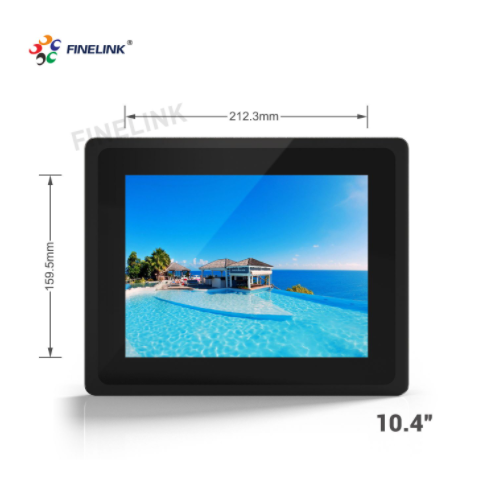Industrial All-in-One vs. Traditional PCs: Which Is Better for Manufacturing?
Manufacturing environments demand robust and reliable computing solutions to ensure smooth operations, efficiency, and minimal downtime. Two common options for meeting these requirements are Industrial All-in-One PCs and Traditional PCs. In this article, we'll compare these two systems to help you determine which is better suited for manufacturing applications.
Advantages:
Ruggedness and Durability:
Industrial All-in-One PCs are purpose-built to withstand harsh manufacturing environments. They are often constructed with ruggedized materials and designed to resist dust, moisture, and extreme temperatures, reducing the risk of system failures.
Integration and Space Efficiency:
All-in-One PCs come in a single, compact unit that integrates the computer, display, and often touchscreen capabilities. This space-saving design is particularly advantageous in manufacturing environments with limited space.
Longevity and Reliability:
These systems are built for 24/7 operation and have a longer lifespan than traditional PCs. They are less prone to hardware failures, reducing maintenance costs and downtime.
Customization Options:
Industrial All-in-One PCs can be customized to meet specific manufacturing requirements, including the addition of specialized ports, RFID readers, or barcode scanners for seamless integration with existing equipment.
Considerations:
Higher Initial Cost:
Industrial All-in-One PCs tend to have a higher upfront cost compared to traditional PCs. However, this cost is often offset by their durability and longevity.
Limited Upgradability:
These systems may have limited options for hardware upgrades compared to traditional PCs. This can be a consideration if you anticipate the need for frequent hardware updates.
Traditional PCs
Advantages:
Cost-Efficiency:
Traditional PCs are generally more budget-friendly upfront, making them an attractive option for smaller manufacturing operations or those with limited budgets.
High Performance:
Traditional PCs can be easily customized with high-performance components, making them suitable for resource-intensive tasks like 3D modeling or simulations.
Upgradability:
Traditional PCs offer greater flexibility for hardware upgrades, allowing you to adapt and expand your computing power as needed.
Considerations:
Reliability in Harsh Environments:
Traditional PCs may require additional protective measures or enclosures to operate reliably in harsh manufacturing conditions, which can add to the overall cost.
Space and Cable Management:
Unlike Industrial All-in-One PCs, traditional setups with separate monitors and computer towers can require more space and complex cable management.
The choice between an Industrial All-in-One PC and a Traditional PC for manufacturing depends on your specific needs and budget. Industrial All-in-One PCs excel in ruggedness, durability, and reliability, making them ideal for harsh environments where system failure is not an option. Traditional PCs offer cost-efficiency and flexibility, making them suitable for less demanding manufacturing setups. Ultimately, the decision should be based on your manufacturing environment, operational requirements, and long-term goals.
- Previous: How Are Barcode Scanners So Accurate?
- Next: What is powerbank sharing?



